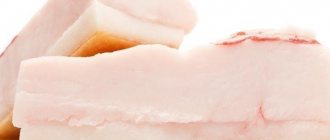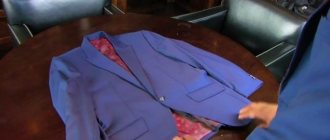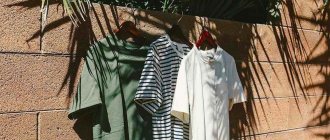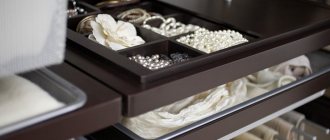After the end of the period of wearing boots, housewives have to figure out what to do with the shoes so that they do not take up much space, while maintaining their attractiveness and functionality until the next season. As practice shows, very few people know how to store high boots, as well as rubber products or their swamp analogues.
As a result, shoes become covered with creases, cracks, and sometimes even traces of mold. They quickly become unusable, so by the beginning of the season, the wardrobe has to be urgently updated. But if everything is done correctly, such problems will not arise. At the same time, preliminary preparation and proper arrangement of shoes for the summer do not take much time and do not require large energy costs.
Basic Rules
Before you put your boots away for summer storage, they need to be properly prepared. This rule applies to all models without exception, even rubber and marsh ones - so unpretentious in appearance. Depending on the type of material and characteristics of the products, the following manipulations must be performed:
- Any boots must first be thoroughly cleaned of dirt, dust, and reagents. Not only the decorative surface of the products is processed, but also their sole. It is forbidden to use metal graters or hard brushes; they easily damage any surface.
- It is recommended to treat suede and velor with special wire brushes. And abrasions from such surfaces can be removed by rubbing them with fine-grained sandpaper and then holding them over a stream of steam for a few seconds.
- High suede boots, so popular today, lose their appeal after just one season of wear. You shouldn’t think that you can fix this in the summer or before the start of the next season; it’s better to do everything right away. You just need to prepare a weak vinegar solution, wipe the products with it and dry thoroughly.
- Wading boots and items that have been worn for a long time become heavily saturated with sweat, even if this is not obvious at first. Such items of footwear must be disinfected before being put away. To do this, prepare a pale pink solution of potassium permanganate, which we carefully use to treat all the internal surfaces of the boots. 3% hydrogen peroxide also copes well with the smell of sweat.
- After all the preliminary processing steps have been completed, the products need to be dried. To do this, it is best to use well-ventilated rooms or a balcony with access to fresh air. Attempts to speed up the process using artificial heat sources will not lead to anything good. Swamp boots and rubber boots may become worn out from such exposure.
We recommend: Is it possible to store pita bread in the freezer: how to keep bread fresh and tasty for a long time
All that remains is to choose a place where you can store your boots in the summer. And this will depend on the purpose of the shoe, the characteristics of its material and design.
Waste paper
A very primitive and not the most convenient method, but effective. If you have a lot of unnecessary newspapers, magazines, in general, anything paper, then you have now found a use for them.
The paper should be crumpled into “balls” and filled with shoes. There is no need to make them too small; a few large “lumps” will be enough.
If you plan to return to reading a magazine in the future, you can simply twist it and insert it into your shoes; you won’t have to tear or wrinkle anything. This option may be suitable if your boots and magazine are the same length.
How to properly store boots with high tops?
In this case, you need not only to choose the optimal place to store boots, but also to organize everything correctly. Only in this case, capricious products will not be covered with creases, folds, and abrasions.
The following recommendations can be taken into account:
- An old but effective option with newspapers. Just don’t just stuff the paper into your boots; it’s better to roll it into voluminous fist-sized balls. They will help maintain the shape of the products, absorb all excess moisture, and will not stretch the material. If possible, it is recommended to update the filler every 3-4 months, monitoring the condition of the shoes.
Advice: Don't expect that the cardboard inserts that accompanied the boots when they were sold will keep the product in shape during the summer months. After just one season of active wear, the models will noticeably stretch and these inserts will simply sink into them, not fulfilling their purpose. Therefore, you need to take care in advance about selecting a suitable option.
- If there is enough space in one of the closets, then it is better to hang your favorite pairs of boots using specialized store-bought or homemade hangers. A plastic part resembling a mannequin's leg is inserted into the boot, which is fastened. And the hook clings to any crossbar.
- As a last resort, you can also use trouser hangers, which consist of two wooden bars that clamp the upper part of the product. To prevent dents from forming on the surface of the boots, you need to place strips of thin foam rubber or fabric under the crossbars.
- Finally, inflatable and plastic fillers provide the desired degree of fixation of the boot. True, there are several negative aspects to their use. Plastic has a specific odor that is transmitted to leather and suede. Some people don’t even notice this, and some then cannot wear such boots. Inflatable elements begin to deflate after some time, so they need to be replaced or inflated. And if something heavy falls on such fillers, they can burst with a fairly loud sound.
It turns out that the main thing when storing high boots is to prevent creases. Under no circumstances should you simply fold your boots by bending the top and put them in a box. Even natural leather, so impervious to external influences, will not be able to retain its original texture with this approach.
We recommend: How long can you store sushi and rolls in the refrigerator?
Closet
Storing shoes in a closet is an excellent solution for small apartments. A retractable door saves space, and closed shelves reliably hide shoes from prying eyes.
Such a wardrobe can be placed in the corner of the room, built into the gap between the bed and the wall. Made to order, it will fit perfectly into the interior of the apartment and help solve the problem of storing shoes in the best possible way.
Features of storing rubber and waders boots
Many housewives continue to store waders and rubber boots as needed, even if they have already had to get rid of several damaged pairs. In fact, there is nothing difficult in creating conditions suitable for specific products. You just need to follow the following rules:
- Drying should take at least 2-3 days. It seems that these materials do not get wet or dry very quickly, but this is not the case. Only after a couple of days in the fresh air do they really get rid of all the excess moisture.
- Do not keep rubber products in direct sunlight or near artificial heat sources. This will cause the material to dry out, crack, and maybe even burst.
- These models cannot be stacked; they must be kept in an upright position, otherwise the internal parts of the shoes may become covered with mold colonies. If the tops are soft, then the products need to be filled with crumpled newspaper balls, which again are recommended to be replaced every 3-4 months.
- Despite the fact that waders are usually very high, they can only be stored flattened. It is best to hang them in some cool but ventilated area. If there is such an opportunity, then there is no need to bend them in any part. When it is impossible to create such conditions, the most gentle type of installation is allowed. But in this case, they will have to be taken out every month and hung out in the open air for several hours in a straightened state.
- The quality of the material will remain at the proper level for a long time if, before storage, the outer part is smeared with a small amount of glycerin, and the inner part is sprinkled with cosmetic powder, baby powder or talcum powder.
- The optimal storage temperature for these shoes is 5-15ºС, with a humidity of 40 to 60%. There should be no containers with kerosene or oil nearby. In cold weather, the rubber surface may crack.
All of the above manipulations only seem troublesome and time-consuming. In fact, the entire process, which involves taking active steps, takes no more than half an hour. But the end result speaks for itself. Products that are stored in compliance with the above rules retain their functionality and attractiveness for a long time, do not shrink or stretch in the most inappropriate places.
Storing seasonal shoes in the hallway
By season we mean early autumn and the coming winter. Therefore, yes, no matter how much we would like to continue to show off in sandals, it will be problematic in puddles, and simply dangerous to health.
Ideas for high boots
Let's start right away with the heavy artillery: high-top shoes. All fashionistas have one problem in common: boots are usually difficult to store due to their height. The top constantly falls down, and soon your favorite high Chelsea boots take on an unsaleable appearance.
What to do? We stuff the boots with paper or form holders and place them on the top shelf, or even better, for such cases we choose shelf-holders for boots. Or special designs with sticks.
If you don’t know how to store things, find the answer in this article: Where to store things if the hallway is small: 10 cool ideas.
Where can I buy
Holder shelf for Decent Store (3589 RUR), shelf for boots hit-dekor.ru (3073 RUR), form holder for boots Decent Store (499 RUR), stretcher for boots Yandex.Market (1199 RUR).
Flat Shoe Ideas
Boots, oxfords, loafers with rough soles, and even just ballet flats will fit perfectly on the shelves. And so that everyone has their own space, this interesting shelf-holder will come in handy. The frame is plastic and will not scratch the floor. Instead of the usual shelves, you can try another design. It attaches directly to the wall, doesn't take up much space, and even folds up when you're not wearing shoes.
And remember, only the essentials should be stored in the hallway: It’s time for them to go to waste: 7 things in the hallway that don’t belong there.
Where can I buy
SheIn folding shoe rack (RUB 760), organizer shelf Decent Store (RUB 1,189), Ozon steel shoe rack (RUB 5,394)
Shoe bench
Such benches will hide motley couples, and order will reign in the hallway. What else do you need when the space is tiny? Choose 2-in-1 options: a comfortable bench so you don’t have to double over when you’re going out, and underneath it there’s a compact storage compartment.
Where to buy banquettes
With turquoise pillow First furniture (RUB 7,990), bench with Laredoute door (RUB 27,754), with Laredoute drawers (RUB 47,309).
Tall shoe cabinet
An unusual option for those who have a lot of flat-soled shoes (although with our Russian ingenuity, high boots can also be placed there) and who want to use every square millimeter of the hallway. Yes, a shoe closet almost up to the ceiling. The plus is that it saves space and becomes a shelter for 9-10 pairs of shoes. It would be great to place brushes and shoe polish at the bottom.
Where can I buy
Light with a sliding mechanism Hoff (RUB 8,799), black tall cabinet alesyamebel.ru (RUB 9,399), pencil case 360.ru (price on request).
Shoe maker
A shoe rack or shoe rack is an option for a very narrow hallway, when the soul would like to roam, but there’s just nowhere. In our opinion, any shoe rack looks stylish. Apparently the secret is in the design. You won't be able to store high boots inside. So the choice is yours. By the way, keys and other small items that are stored in the hallway will take their place on top of the shoe shoe.
Where can I buy
White cabinet First furniture (4,799 RUR), with Hoff concrete finish (4,799 RUR), with two Ikea compartments (10,999 RUR)
Storage conditions
The safety of things is influenced by many factors, for example:
- temperature regime,
- humidity,
- Sun rays.
Let's take a closer look at them.
sunlight
Both direct exposure to the sun and the complete absence of daylight have a bad effect on shoes. The sun causes the skin to fade, warp and even become deformed. If a lot of moisture gets on your shoes or boots, you should dry them before putting them in the closet. Storing wet shoes in dark places can cause mold to grow.
Humidity
Normal humidity is 45-55%. If there is excess moisture, fungus or mold may appear in your favorite shoes or boots. In order to avoid this, the storage room, as well as the product itself, must be dry. If there is insufficient humidity, use a humidifier.
Shoes do not withstand temperature changes well. This is especially true for patent leather shoes, boots and sandals.
Dust that accumulates on shoes after being outside should be removed immediately upon arrival home. The storage area should be as isolated as possible from dust.
Storage
Everyone knows where to store shoes - in a specially designated place. A separate small space, such as a small closet, works great. But such luxury is not available to everyone due to lack of living space. Therefore, you can find a way out and use a closet, shoe chest, shelves or special containers for this. In the absence of a specially designated space or furniture for storage, you can use:
- wardrobe compartments,
- mezzanine,
- drawers for chairs, sofas, beds.
This will allow you not to turn your apartment, especially the hallway and corridor, into a warehouse. There will only be slippers, shoes that you are currently wearing, and items to care for them.
It is worth taking a responsible approach to how to store leather shoes. The best place for this is the box in which it was packed at the factory. The factory box perfectly matches the size of the product and creates suitable conditions for its storage.
Do you know how to store shoes is not recommended? There are several taboos that must be adhered to.
- Do not store your shoes or boots in sealed boxes or plastic bags, as they lack ventilation.
- Do not store boots in unheated areas. You can store shoes on a balcony, loggia or veranda only temporarily or in the summer.
Having thought in advance where and how to store shoes, you will not only ensure their safety, but also save your time and free up space in your apartment, harmoniously fitting the storage space into the overall interior of your home.
Features of materials
Each type of material has its own characteristics for cleaning and storage, which we cannot help but talk about:
- suede shoes dry using a brush and cleaning foam. To avoid abrasions, separate pairs from each other with a soft cloth when storing.
- leather shoes should be allowed to dry for at least 12 hours, or better yet, longer. To preserve the color after drying, you need to treat it with cream or shoe polish. Wait until completely absorbed and remove.
- Nubuck boots require special care - they are afraid of moisture. To remove small stains, use a special nubuck eraser, and clean large stains with a cloth soaked in warm water with 2-3 drops of ammonia.
All these tips are quite simple and inexpensive, but winter shoes with proper care will definitely last you for several years.
At what temperature should shoes be stored?
Temperature conditions are of great importance when it comes to storage. It is not recommended to keep even winter boots in the cold - this will negatively affect the condition of the material and lead to cracking. At the same time, you should not keep your shoes near heating devices; hot, dry air can deform your shoes.
It is best to keep shoes at a temperature of + 10 to + 25 ° C in a dry place with good ventilation. In such conditions, they will be able to wait until the next season without losing their beauty and quality characteristics.











